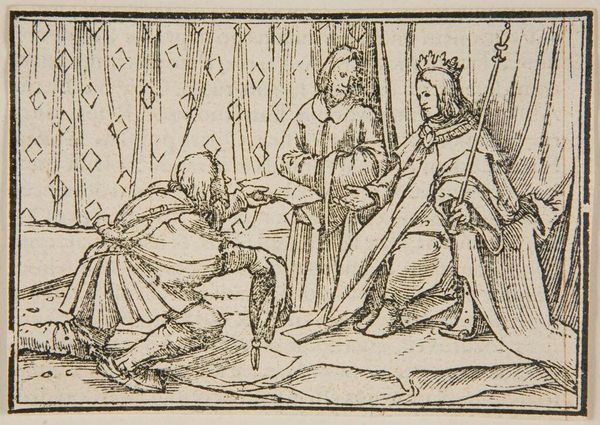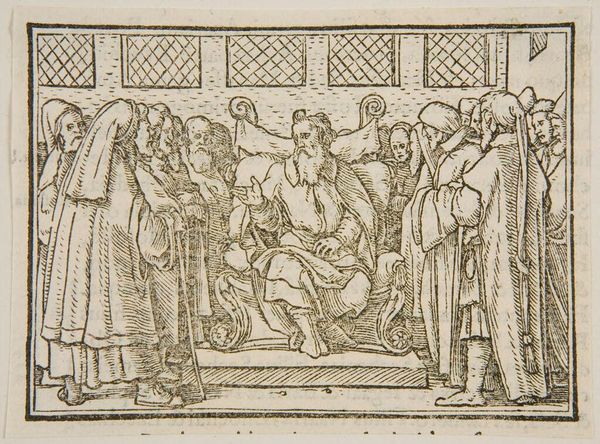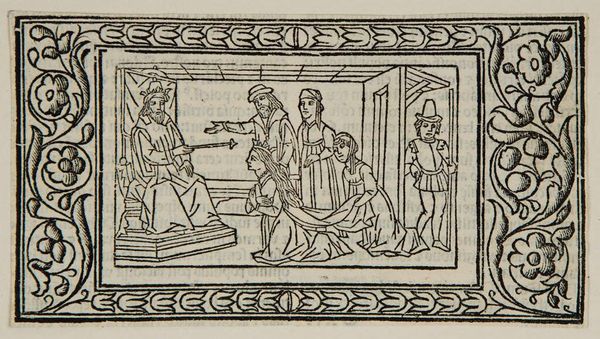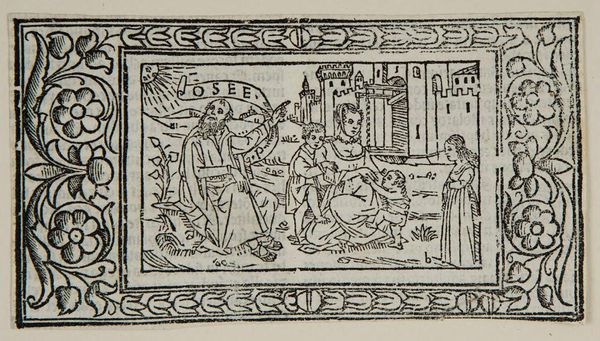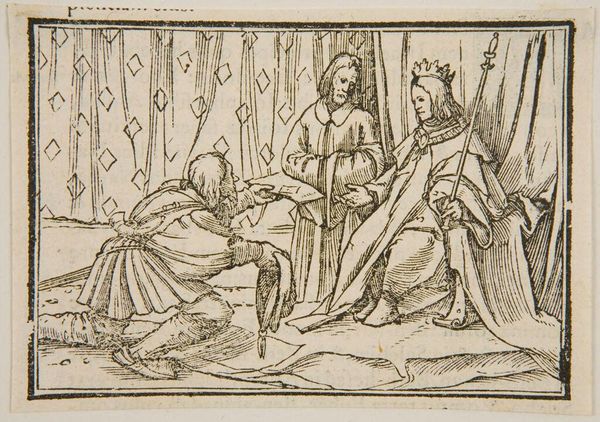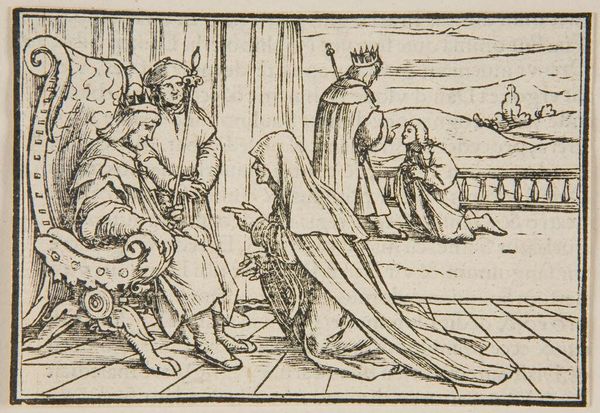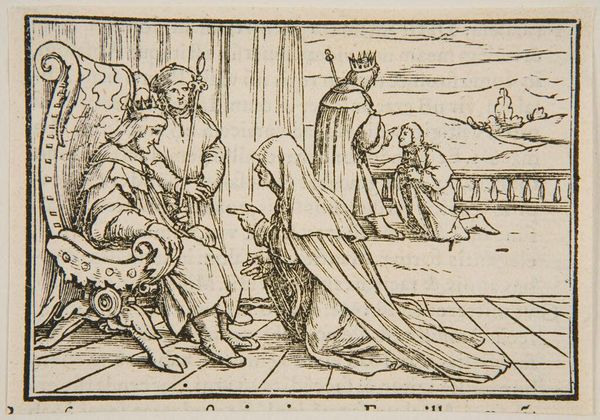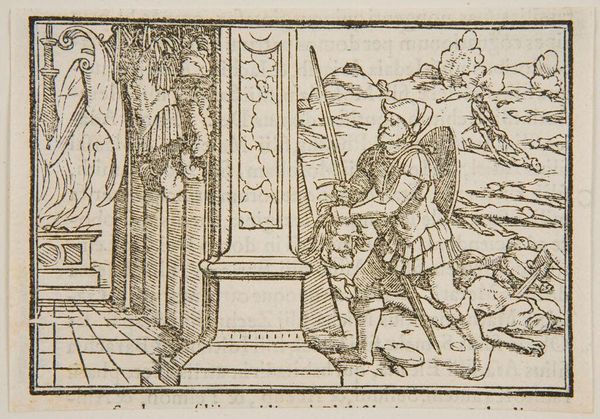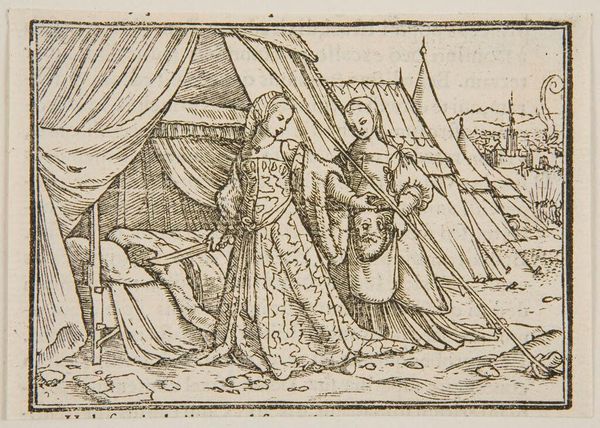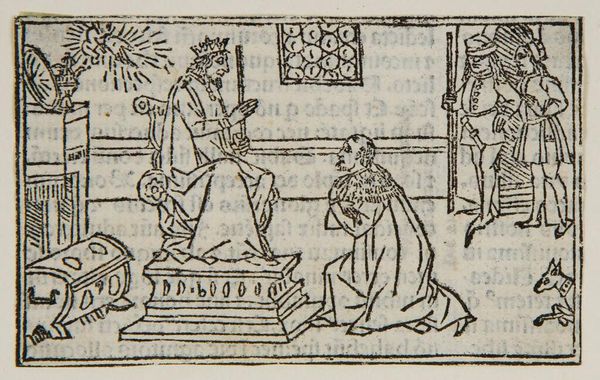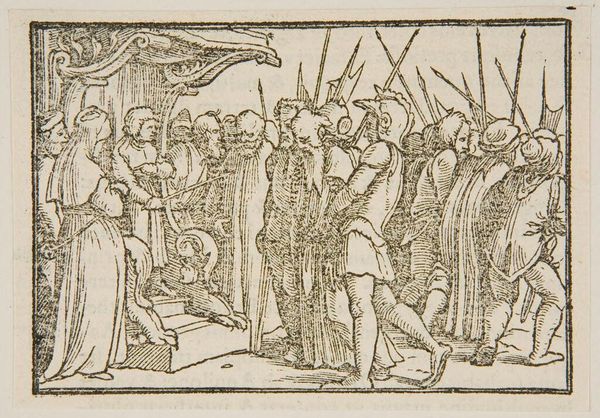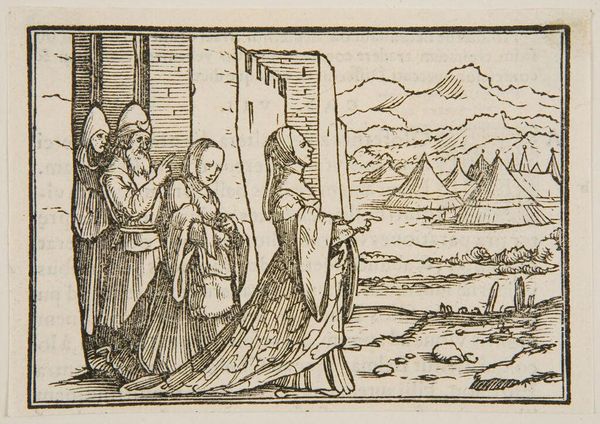
Copyright: CC0 1.0
Curator: This is "Esther I, II," a compelling print by Hans Holbein the Younger. The composition is striking, immediately drawing the eye to the figures arranged around a central, elevated figure. Editor: My first impression is one of somber deference. The monochromatic palette and the dense, linear detail create a weighty atmosphere. Curator: Indeed. Holbein's precise linework and the stark contrast contribute to the print's formal intensity. Consider the visual weight given to the king, positioned above the kneeling Esther. Editor: Absolutely. The act of kneeling, particularly within a patriarchal structure, speaks volumes about the power dynamics at play. How can we interpret Esther's role here? Is she a supplicant, or something more? Curator: The spatial relationships certainly emphasize hierarchy. The repetition of vertical lines in the curtains and figures reinforces the structure. Editor: It highlights how spaces can enable or constrain agency. Understanding this print as a reflection on power and agency grants us vital insights into historical gendered interactions. Curator: Precisely. The formal analysis enhances our understanding of the print's cultural significance. Editor: Examining the print through an intersectional lens allows us to unravel the complexities of its historical context and continue a critical dialogue.
Comments
No comments
Be the first to comment and join the conversation on the ultimate creative platform.

